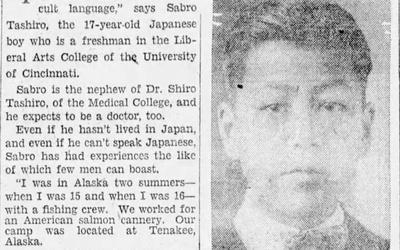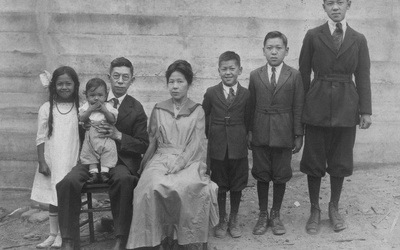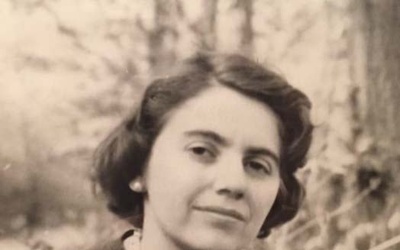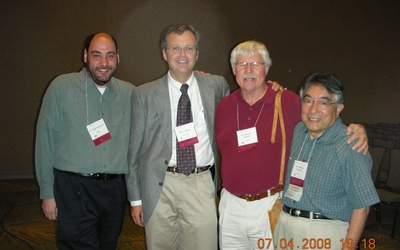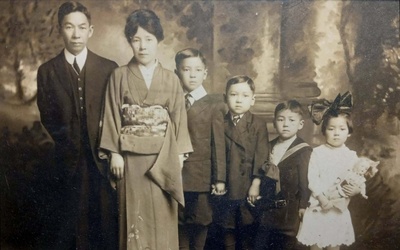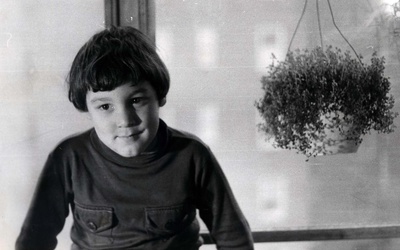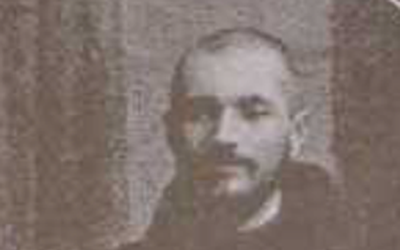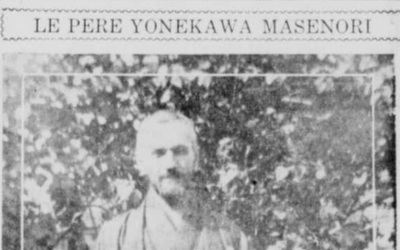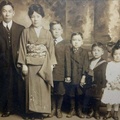
ニューヨーク生まれのグレッグ・ロビンソン教授は、カナダ・モントリオールの主にフランス語を使用言語としているケベック大学モントリオール校の歴史学教授です。ロビンソン教授には、以下の著書があります。
『By Order of the President: FDR and the Internment of Japanese Americans』(ハーバード大学出版局 2001年)、『A Tragedy of Democracy; Japanese Confinement in North America』 ( コロンビア大学出版局 2009年)、『After Camp: Portraits in Postwar Japanese Life and Politics』 (カリフォルニア大学出版局 2012年)、『Pacific Citizens: Larry and Guyo Tajiri and Japanese American Journalism in the World War II Era』 (イリノイ大学出版局 2012年)、『The Great Unknown: Japanese American Sketches』(コロラド大学出版局、2016年)があり、詩選集『Miné Okubo: Following Her Own Road』(ワシントン大学出版局 2008年)の共編者でもあります。『John Okada - The Life & Rediscovered Work of the Author of No-No Boy』(2018年、ワシントン大学出版)の共同編集も手掛けた。 最新作には、『The Unsung Great: Portraits of Extraordinary Japanese Americans』(2020年、ワシントン大学出版)がある。連絡先:robinson.greg@uqam.ca.
(2021年7月 更新)
この執筆者によるストーリー
第6部: サブロとアーサー・タシロ - 多才な兄弟
2024年4月12日 • グレッグ・ロビンソン
このコラムでは、田代愛次郎さんと田代尚さんの素晴らしい家族の歴史を、彼らの末っ子であるサブロ(別名サブロ、またはサブ)さんとアーサーさんの人生について語りながら締めくくりたいと思います。 サブロ・タシロは 1910 年 2 月にコネチカット州ニューヘブンで生まれ、第一次世界大戦の終結後、家族とともにシアトルに移住しました。1925 年と 1926 年の夏、彼はアラスカ州テナキーにあるアメリカのサーモン缶詰工場で、スウェーデン、ドイツ、ギリシャ、イタリアからの移民ととも…
第5部:田代尚:一世の女性教師と証人
2024年4月5日 • グレッグ・ロビンソン
私は多作で才能豊かな田代一家についてのコラムの連載を始めました。私はすでに、田代愛次郎「フランク」と彼の3人の子供、ケンジ(別名ケン) 、アイコ、アイジについてのコラムを投稿しました。ここで私は、愛次郎の妻であり、彼らの子供たちの母親である田代ナオの研究を追加しようと提案します。田代尚は、日本の本州北東部にある越後国(当時はそう呼ばれていた)で、長谷川尚山として生まれました。彼女の父親は、武士の血を引く教育を受けた日本人で、明治維新後に引退して食料品店を経営していました。尚…
私のいとこジュディ:インスピレーション
2024年3月31日 • グレッグ・ロビンソン
私の愛する従妹のジュディ・マッキー(ベイカー)が、2024年2月11日に99歳で亡くなりました。経済学者としての長いキャリアの中で、彼女は多くの人々、特に専門分野に進出する女性にとってのロールモデルでありインスピレーションの源でした。ここでは、日系アメリカ人の歴史家および学者としての私の仕事に彼女がどのように貢献したかについてお話ししたいと思います。彼女は1925年1月にニューヨークで、ユダヤ系移民のモーゼスとソフィア・ローゼンブラムの一人娘としてジュディス・ローゼンブラム…
アート・ハンセンへの感謝—「才能ある指導者でありインスピレーションの持ち主」
2024年3月18日 • グレッグ・ロビンソン , 日米ニュース
日系アメリカ人の歴史の専門家の中で、アーサー・ハンセンほど永続的な貢献を果たした人はほとんどいません。長年にわたる学者および活動家としての彼の仕事は日系コミュニティではよく知られていますが、私は、私やその他多くの人々にとって、才能ある指導者でありインスピレーションを与えてくれた彼に敬意を表したいと思います。(このコラムの一部は、15年前にアートの退職を記念して出版された本に収録された私のエッセイから抜粋したものです。)今では信じられませんが、私がアートと初めて会ってから25…
第4回(2) 建築家 田代愛治
2024年3月5日 • グレッグ・ロビンソン
パート4(1)を読む>> 1938 年、アイジ・タシロはノースカロライナ州ブーンにあるアパラチア州立教員大学 (現在のアパラチア州立大学) の教員として採用されました。彼はアメリカの大学で正規の教員として雇用された最初の二世の 1 人でした。彼は西洋文明史と創作文芸を教える任務を与えられました。教授としての職務に加え、彼は造園家としても従事していました。最終的には、現在の心理学棟を含むキャンパス内のいくつかの建物や、さまざまな教員住宅を設計することになりました。…
第4回(1) 作家でありアスリートでもある田代愛治さん
2024年3月4日 • グレッグ・ロビンソン
田代愛次郎と直の 5 人の子供の中で最も傑出していたのは、間違いなく息子の愛次 (発音は「IG」) です。作家、アスリート、建築家、造園家として、彼は半世紀の大半を仕事に捧げました。二世としては珍しく、彼はキャリアのほとんどを、アジア系アメリカ人の人口の中心地から遠く離れたアメリカ南部で暮らし、働きました。タッシュとして知られるアイジ・タシロは、1908年7月6日にロードアイランド州ポータケットで生まれ、幼少期をニューヘイブンの葉巻店の2階で兄弟姉妹とともに過ごしました。ニ…
キム・ワイスコフ:コメディ作家
2024年2月2日 • グレッグ・ロビンソン
2023年に101歳で亡くなったテレビ脚本家/プロデューサーの故ノーマン・リアは、オール・イン・ザ・ファミリー、ジェファーソンズ、サンフォードと息子、ワン・デイ・アット・ア・タイムなどの画期的な番組をプロデュースし、1970年代のテレビコメディに革命をもたらしたことで称賛されている。これらの番組のストーリーには、人種差別、離婚、レイプ、中絶、貧困、労働ストライキなど、現実の深刻な問題が含まれていた。リアはまた、著名な俳優、脚本家、監督の指導とキャリア形成に対する寛大さについ…
ユダヤ人らしくあることについて
2024年1月22日 • グレッグ・ロビンソン
最近、私はハワイ生まれの三世で、今は亡き友人のフランクリン・オドを追悼する記事を日米に寄稿しました。私はその記事をカディッシュ(哀悼者の祈り)と呼びました。それはフランクリンと彼の長年のユダヤ学への関心に対する敬意の表れでした。フランクリンはユダヤ学に熱中し、ウェンディ・バーゴフェン教授とアマースト大学でアメリカにおけるユダヤ人とアジア人に関する講座を共同で教えたほどでした。今思えば、それは私がコラムでユダヤ人であることに触れ、暗に私自身のユダヤ人としてのアイデンティティー…
米川という男:第2部—日本からペルーへ
2024年1月3日 • グレッグ・ロビンソン
パート 1 を読む >> 1938 年 6 月、ユルバン マリー クルーティエ (米川) はペルーに派遣されました。1930 年代半ばにエジプトのアレクサンドリアに滞在していたとき、米川は現地の日本領事である北田誠忠と親交を深めていました。北田がペルーの日本大使に任命されると、彼はペルーの日本人コミュニティの代弁者の役割を引き受けました。一世が新しい社会に適応するのを助けるために、北田はペルーの国教であるカトリックに改宗するよう彼らに勧めました。ある情報源によ…
米川という男:パート1—ケベックから日本へ
2024年1月2日 • グレッグ・ロビンソン
20 世紀初頭、カナダ西海岸の日本人移民は、カリフォルニアの日本人移民と同様に、地元白人からますます敵意を向けられるようになった。移民の人種的、宗教的違い、そして白人の農民や商人の経済的競争相手としての存在は、排斥同盟や西海岸の政治指導者による日本人労働移民の遮断運動を刺激した。1908 年までに、バンクーバーでの反アジア人種暴動を受けて、オタワの指導者は東京と独自の「紳士協定」を結び、カナダへの日本人の合法的な入国を年間 400 名に制限した (後に年間 150 名に削減…

